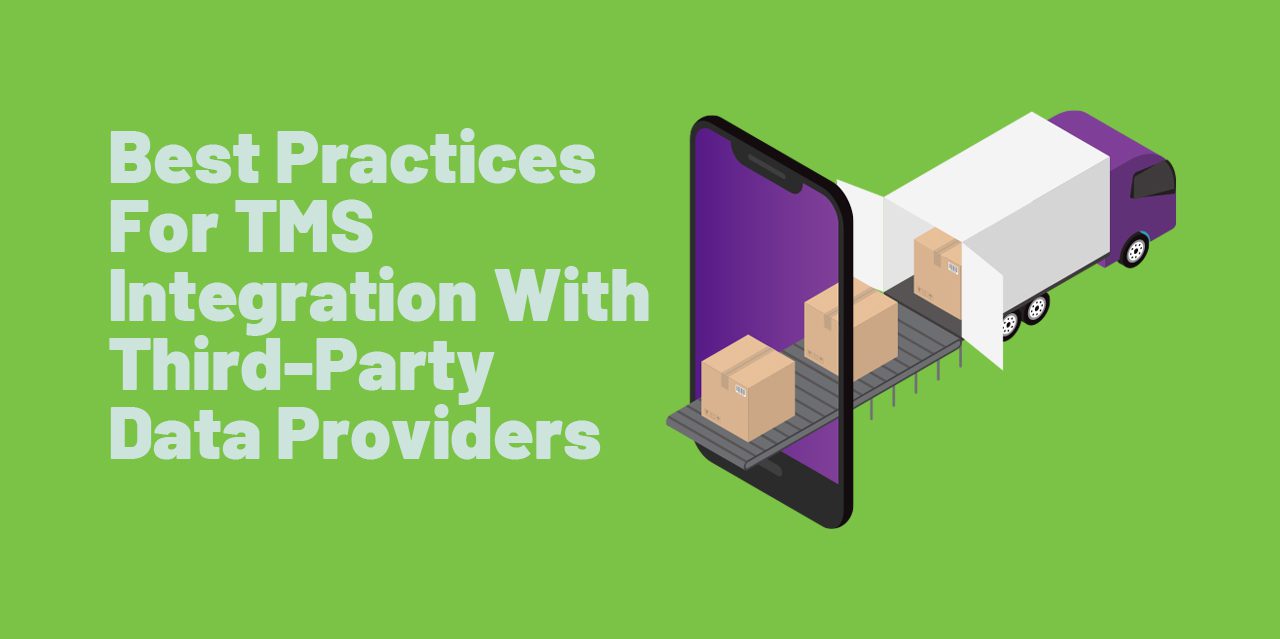Transportation management systems (TMS) are essential for any company dealing with goods movement. The effectiveness of TMS is directly linked to the quality of data received.
That’s why it’s important to integrate your TMS with third-party data providers. The issue is there’s a lot involved in the process. Getting it right involves a lot of research upfront, but it’s worth the effort.
In this blog post, we will discuss some best practices for TMS integration with third-party data providers.
The Importance of TMS Integration
Integration of TMS with third-party data providers is critical for businesses because it allows them to get a complete and accurate picture of their supply chains. From beginning to end, and any issue in between.
Through the integration of TMS with third-party data providers, businesses can access data that was otherwise unavailable, allowing them to make better decisions regarding resource allocation.
Suddenly, they have a better understanding of where their resources are going, where they’re being misused, and where they’re lacking all along the process.
Additionally, TMS integration with third-party data providers can provide businesses with real-time information on product availability and delivery times, thereby helping improve customer service.
By integrating TMS with third-party data providers, businesses can run more efficiently and provide a better customer experience.
Best Practice #1: Choose A Data Provider That Offers APIs
An important component of integrating a TMS is choosing a data provider that provides APIs. By doing this you will be able to integrate your TMS with the data more easily.
Furthermore, using a third-party data provider can provide you with additional features and functionality that you may not find with a standard TMS. For instance, several providers provide API access to their data, making it easier to pull data into your TMS for analysis and reporting.
So, make sure to research the different options available to find the best provider for your needs. They’re not one-size-fits-all, so it may take some time to find the right fit for your business.
Best Practice #2: Make Sure the Provider Offers Real-Time Updates
It is also a best practice to make sure that the data provider offers real-time updates. The advantage of this is that you can make changes to your TMS Integration in real-time, without having to wait for the next scheduled update. Saving the time and hassle this way can result in large savings in the long run.
Businesses that need up-to-date information should use third-party data providers that offer real-time updates. With a provider like this, you can always be sure you’re getting the most accurate data. It makes things much easier to see, understand, and measure.
Moreover, since these providers typically provide robust APIs, you can easily incorporate their data into your TMS Integration. Changes can be made to your TMS as soon as they occur because you are notified immediately.
Best Practice #3: Work With A Data Provider With TMS Experience
When working with a third-party data provider, make sure to ask about their experience with TMS systems. It will ensure a smooth integration process so that you can take advantage of your TMS to the fullest extent possible.
Third-party providers with experience will know how long setup takes, how to speed things along, and how to handle common issues should they arise. More so, they understand your needs far better, because they’ve likely worked with your competitors before.
Assuming the process is simple enough, they know what information to give you upfront, and they likely have resources they can point you to if you need more assistance.
Best Practice #4: Review the Integration Between the TMS and the Third-Party Data Provider
In order to ensure that your TMS and the third-party data provider are still meeting your needs, you should periodically review their integration.
If there have been any problems, now is a good time to address them. Reach out to the provider and see what you can do to fix the situation. See if they have any updates in the works, or plans for new procedures.
By doing this, you will guarantee that your data is properly processed, and your business will continue to run smoothly.
Here are a few things worth considering if you’re unsure of whether the integration is still working properly:
- Is the data being processed correctly?
- Are there any errors or discrepancies in the data?
- Is the data arriving in a timely manner?
- Is the quality of the data satisfactory?
Best Practice #5: Find Ways to Deal With Integration Errors
In a similar vein to the last point, it can be challenging to integrate a third-party TMS. Be patient and don’t get stressed if there are errors. As long as you have some patience and troubleshoot any issues, the process should be relatively easy.
The following tips will make it easier for you to keep track of any errors or problems that occur and document the steps you took to resolve them:
- Give the TMS provider all of the required information, including login credentials, API keys, and any other relevant information.
- Before rolling out the integration to production, test its functionality in a staging environment first. This will help you catch potential problems before they cause problems for your users.
- Take note of the error message and the steps you took to resolve it if something goes wrong. In case it occurs again, you can use this information to troubleshoot.
- Whenever you encounter problems, be sure to communicate with the TMS provider. Your computer support provider may be able to help you resolve the problem faster than you can do it alone.
TMS Integration With Third-Party Data Providers is Worth the Effort
Integrating a TMS with a third-party data provider can be a great way to improve the accuracy and reliability of your transportation information. It can uncover new data that might otherwise have gone unnoticed and unused. This makes it easier for businesses to allocate resources.
Furthermore, in this day and age, businesses have a lot to live up to. In an era where everything is delivered quickly, easily downloadable, or bought, customer service standards are high. TMS with third-party providers can help give your business the competitive edge it needs to rise above the competition.
Just don’t be discouraged. Although it may take some time, effort, and research, it’s worth your while. By following these best practices, you can ensure that the integration process runs smoothly and that the data is processed correctly.
Looking for the right software development partner? RTS Labs has helped hundreds of businesses of all sizes successfully develop the right outsourced custom software for many business needs. Get in touch with us today to learn more about how we can help.






